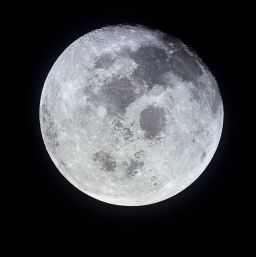Story highlights
Researchers think a head-on collision with another planet created our moon
Moon rocks gathered by the Apollo astronauts were used in the study
It’s the only world besides Earth that man has set foot on. But we still don’t know exactly how it got there.
Now, rocks brought back by the Apollo astronauts in the late ’60s and early ‘70s are providing new clues about how Earth got its moon.
Many scientists have long theorized that the moon formed after a planet called Theia crashed into Earth about 4.5 billion years ago.

A UCLA-led research team compared Earth rocks and moon rocks and determined the crash was a head-on collision, not a glancing blow as earlier theories stated.
“The moon was formed by a violent, head-on collision between the early Earth and a ‘planetary embryo’ called Theia approximately 100 million years after the Earth formed,” the team said in on UCLA’s website.
The team reported its new research in the journal Science.
The researchers analyzed seven moon rocks brought back to the Earth by the Apollo 12, 15 and 17 astronauts. They compared them with six volcanic rocks from Earth, five from Hawaii and one from Arizona.
They found the oxygen in all the rocks had a similar chemical signature.
“We don’t see any difference between the Earth’s and the moon’s oxygen isotopes; they’re indistinguishable,” said Edward Young, the study’s lead author.
Young said that if Earth had only received a glancing blow, most of the moon would have been made up of Theia, and the Earth and moon rocks would not be so similar.
So what happened to Theia? Scientists say it didn’t survive the collision, except for some pieces that got mixed in with the Earth and moon. If it hadn’t crashed with Earth, it might have become a full-fledged planet, Young said.
But then Earth wouldn’t have a moon. That would mean no beautiful moonlit nights, fewer songs and much different weather for us Earthlings. The moon gets credit for moderating Earth’s wobble and stabilizing its climate.























